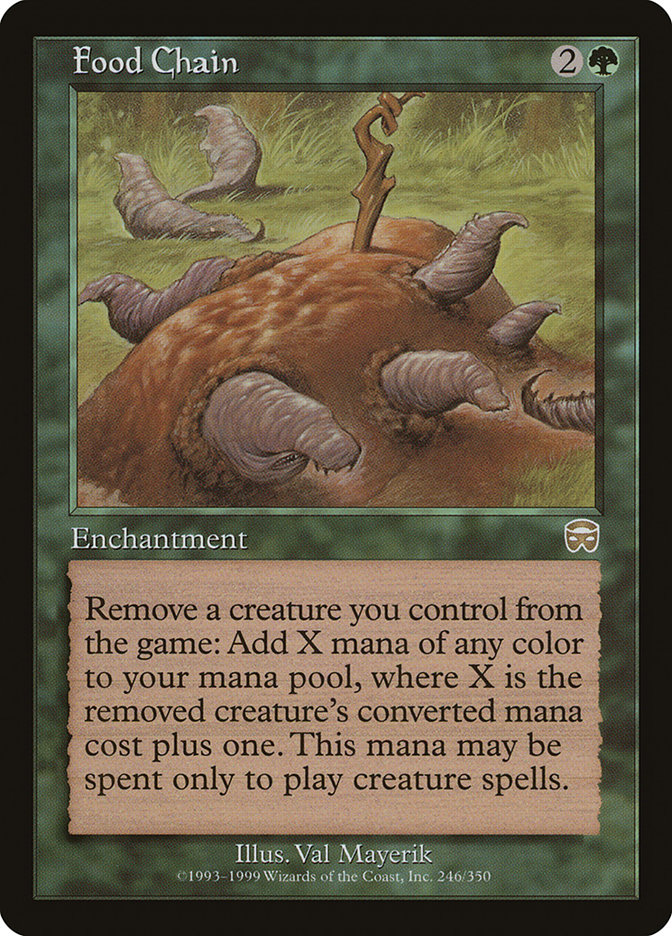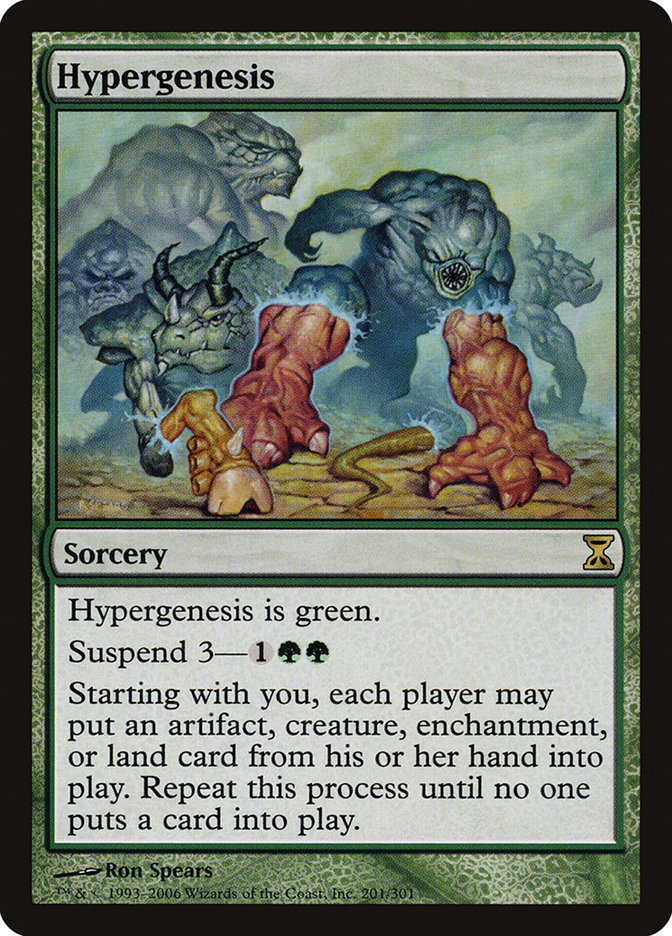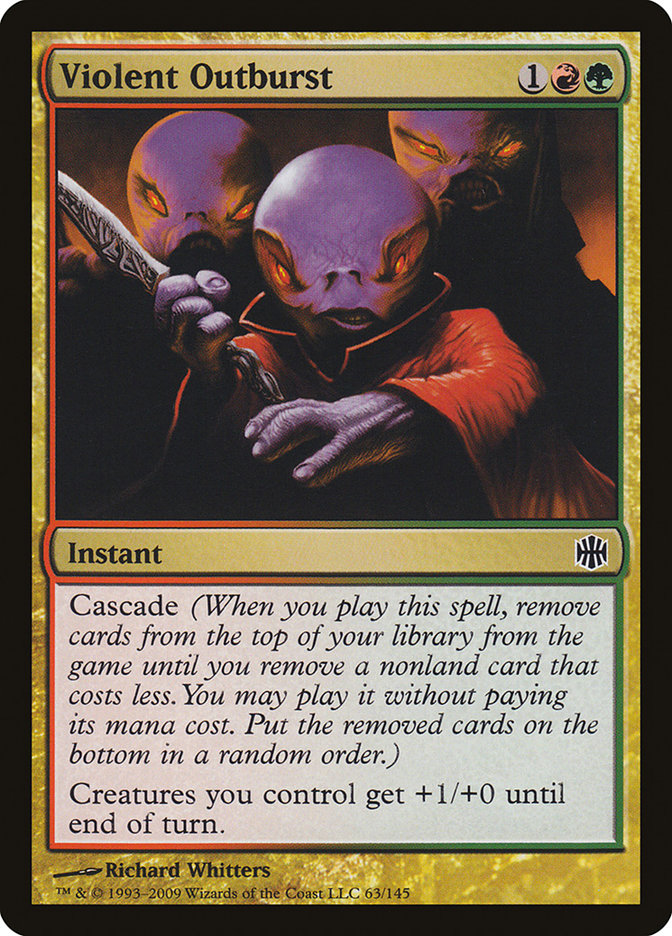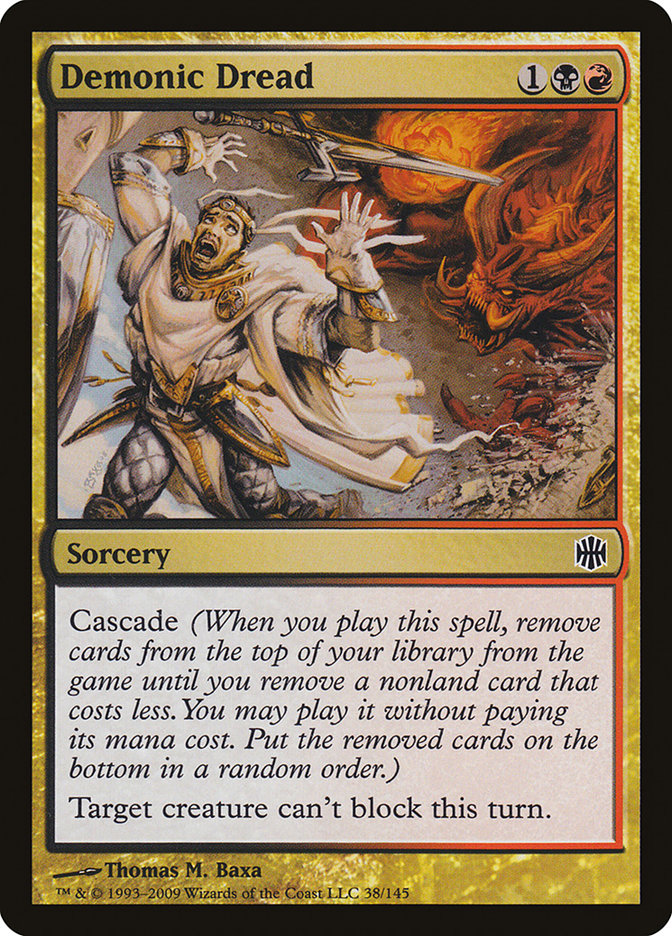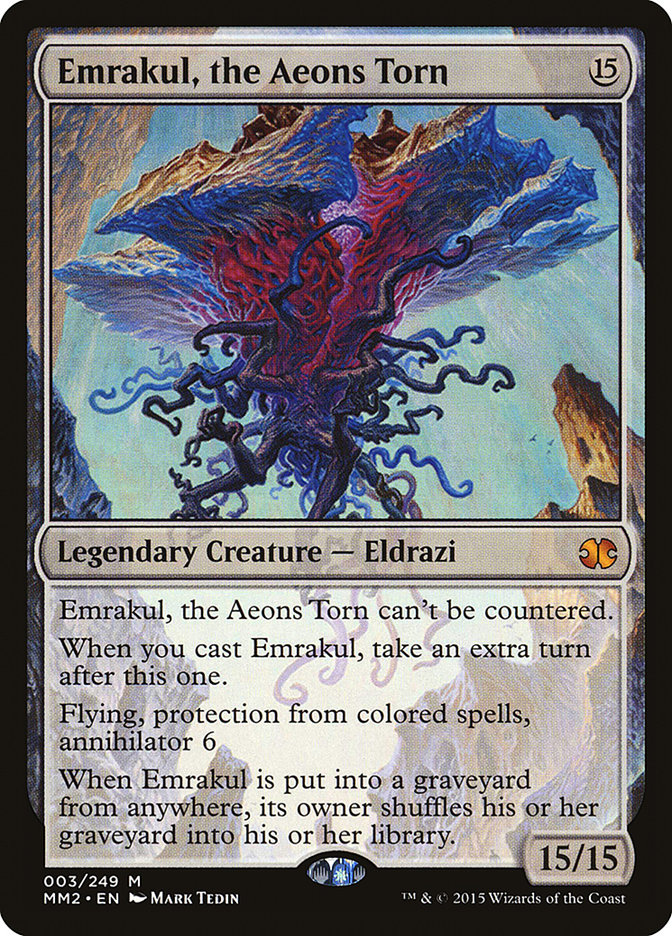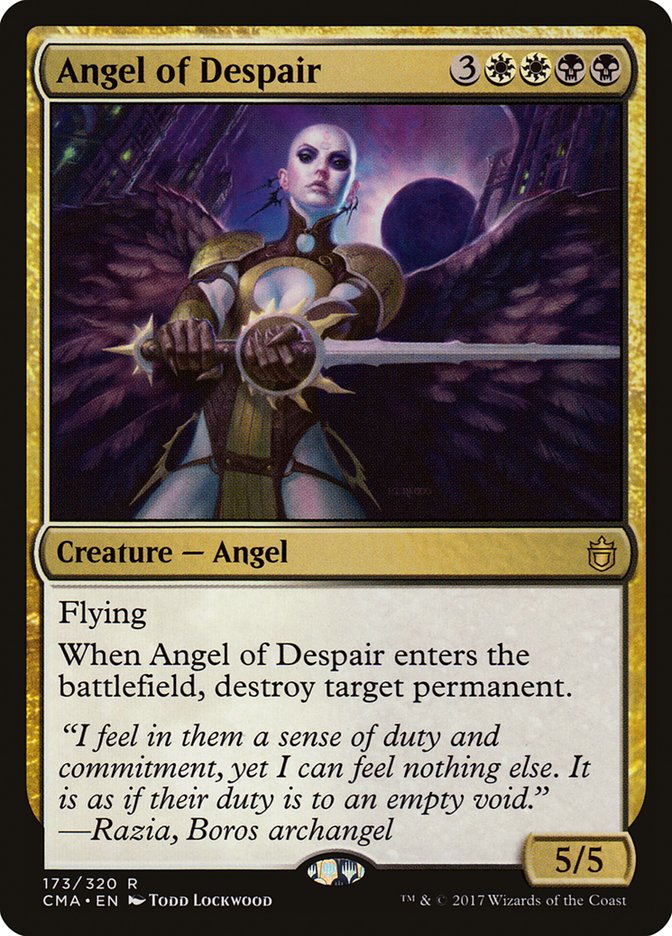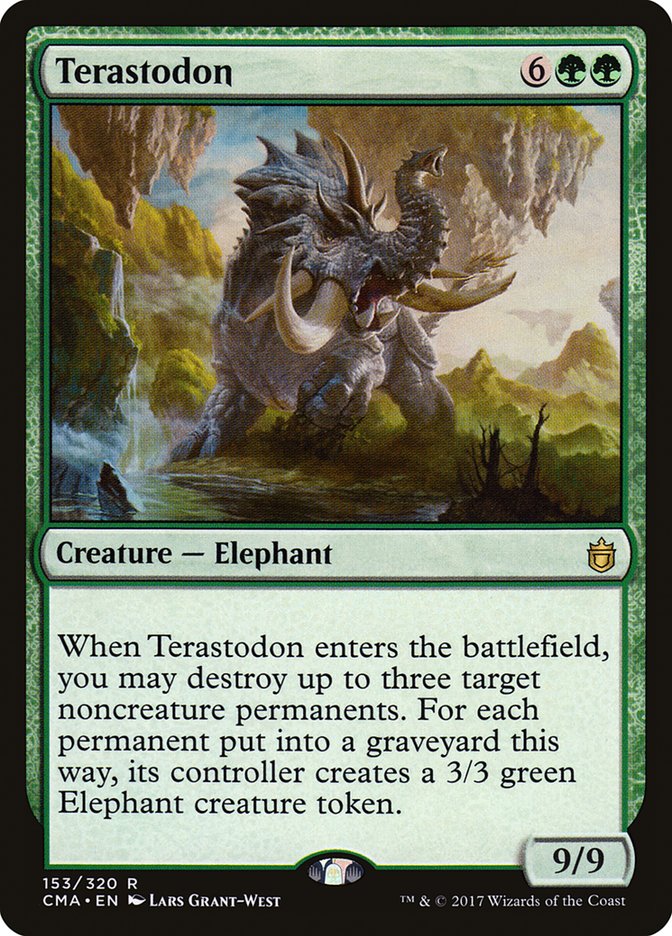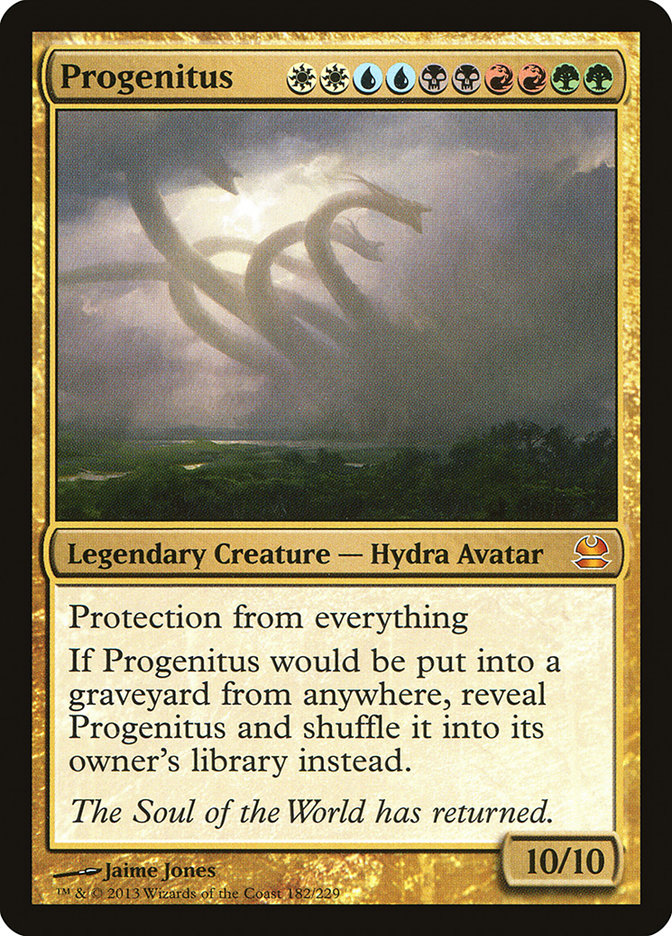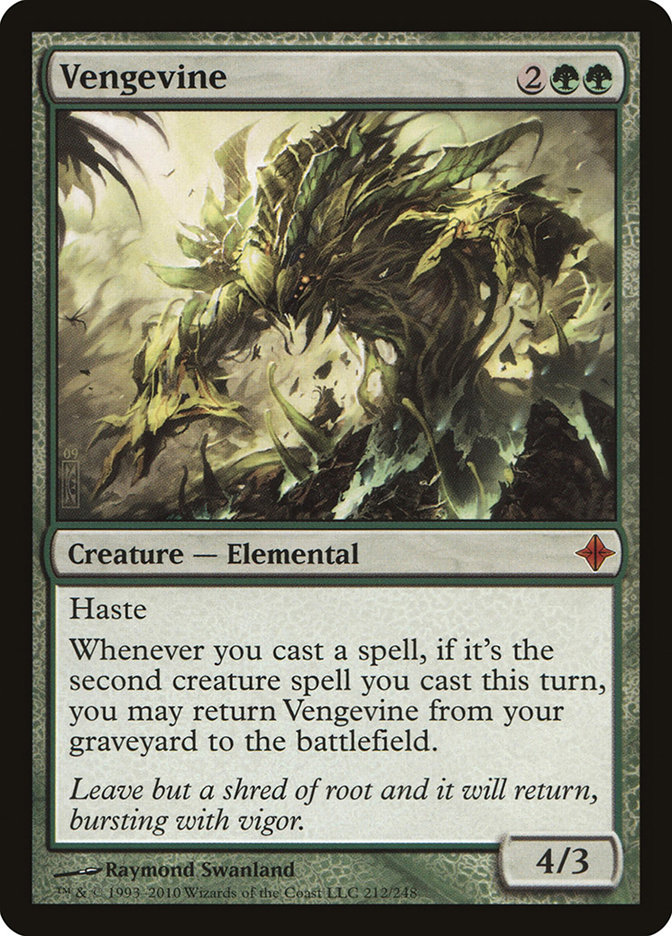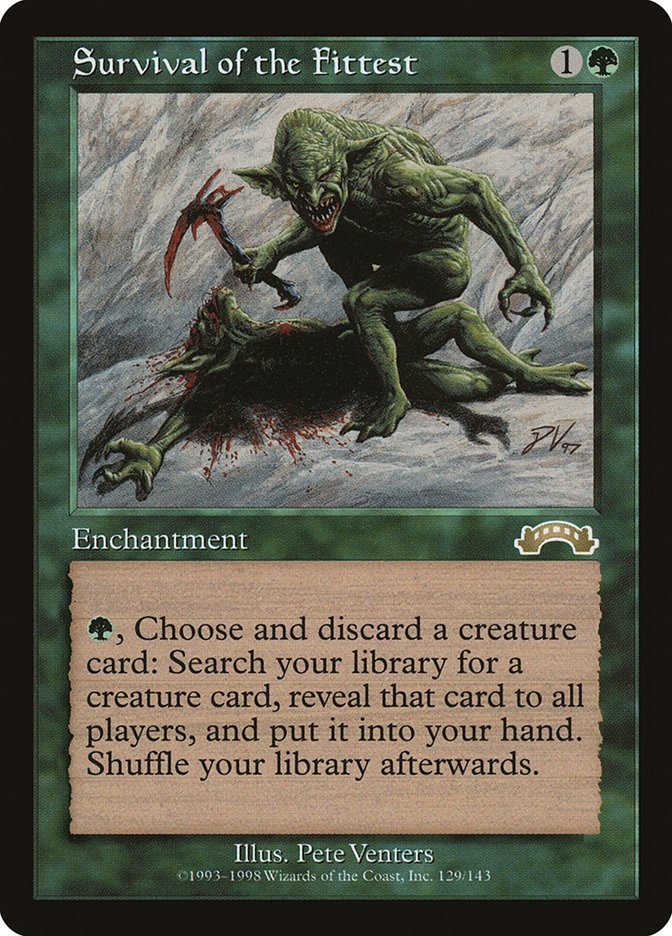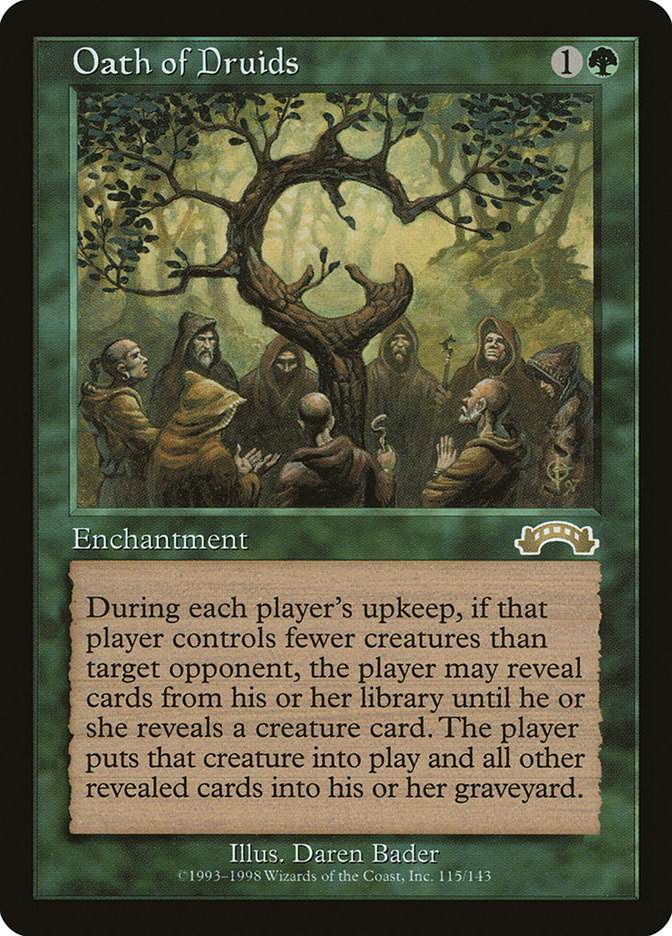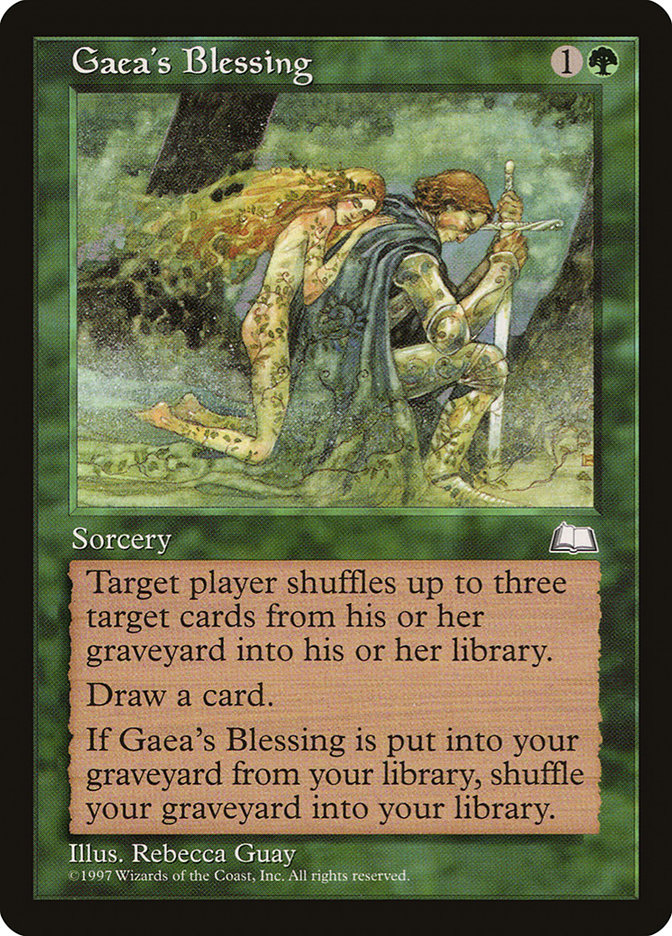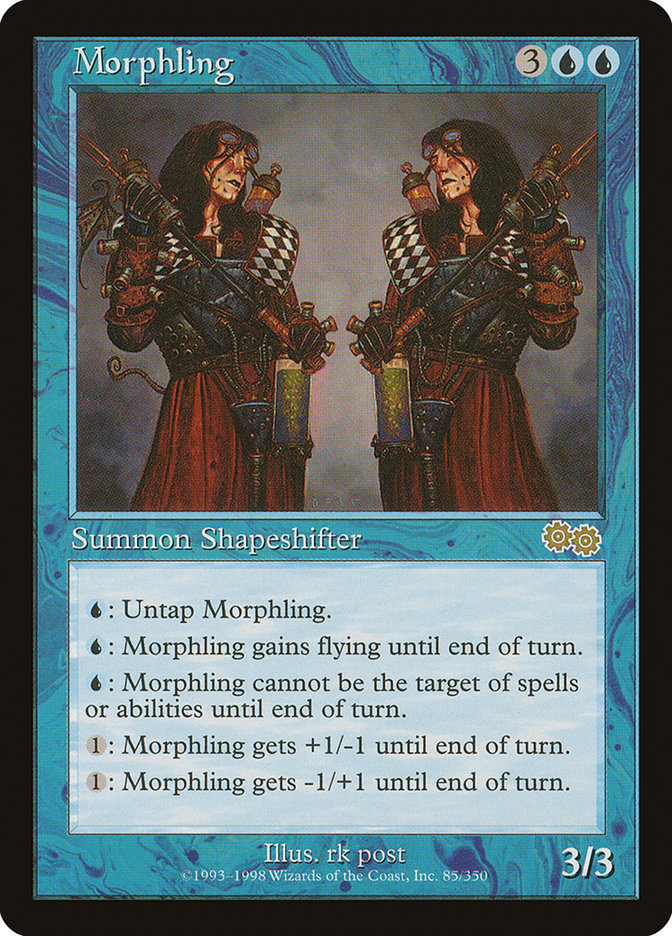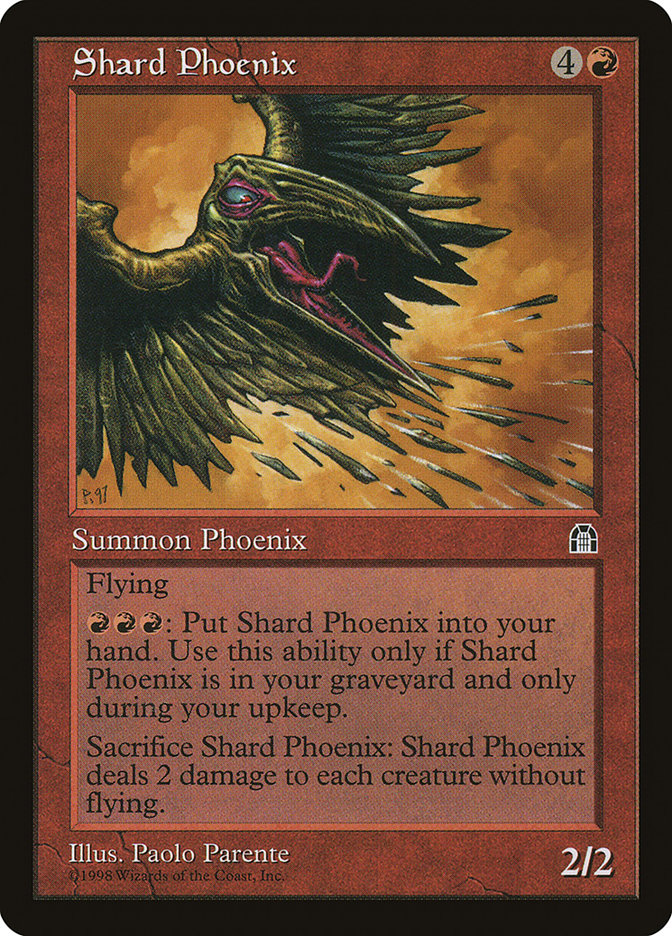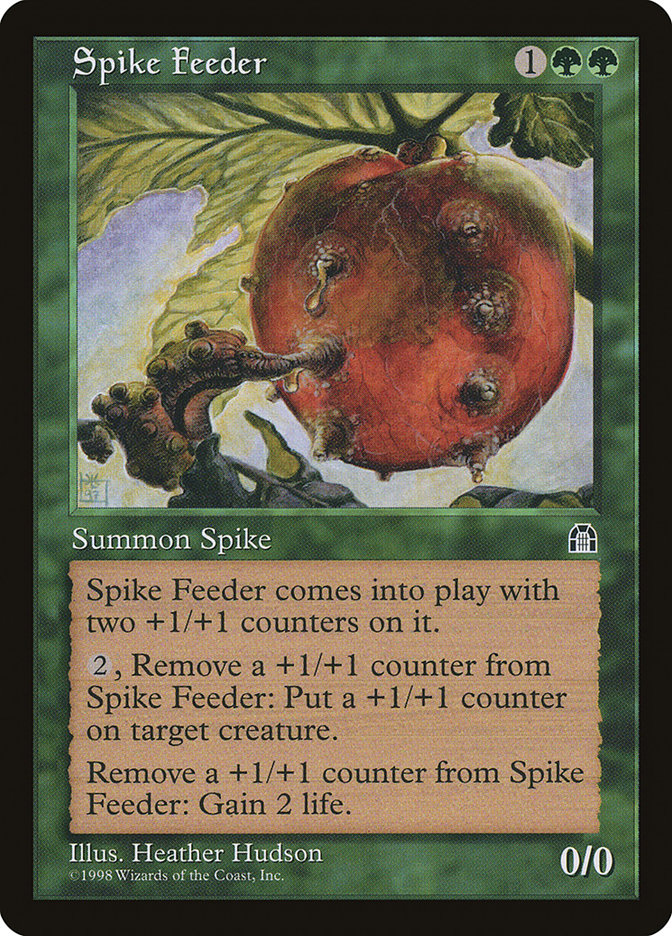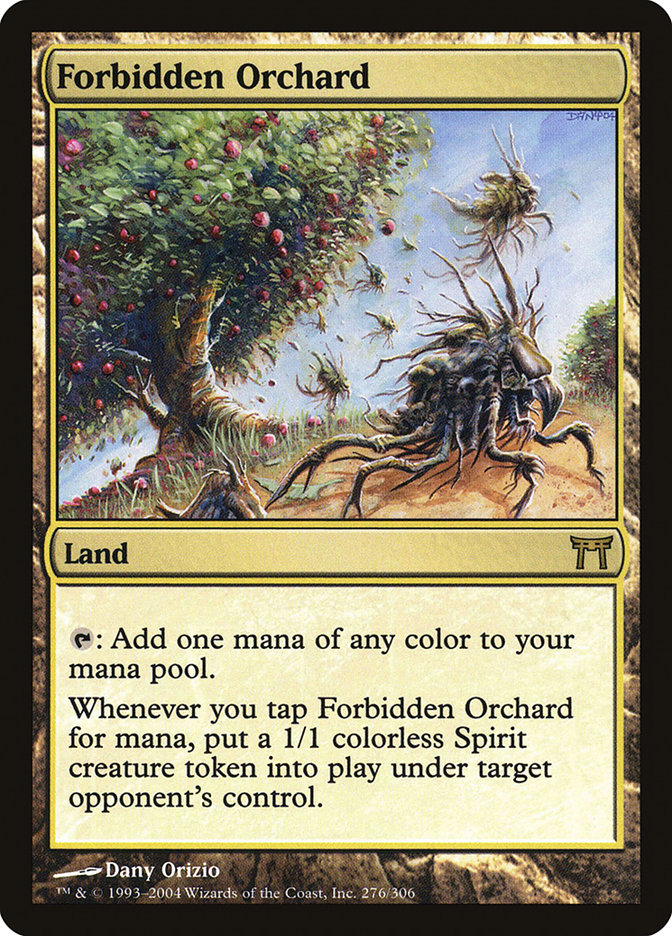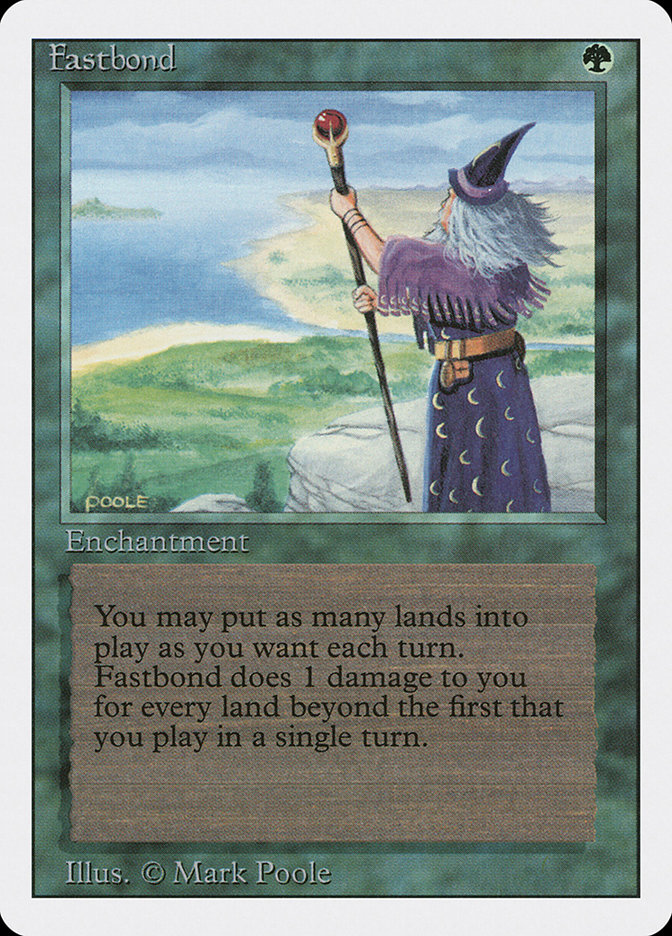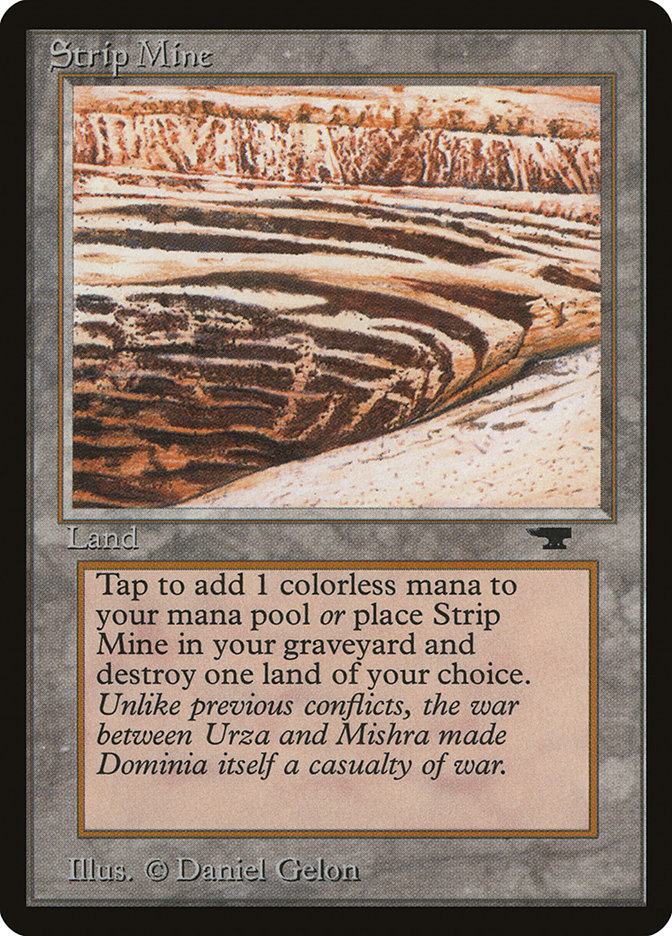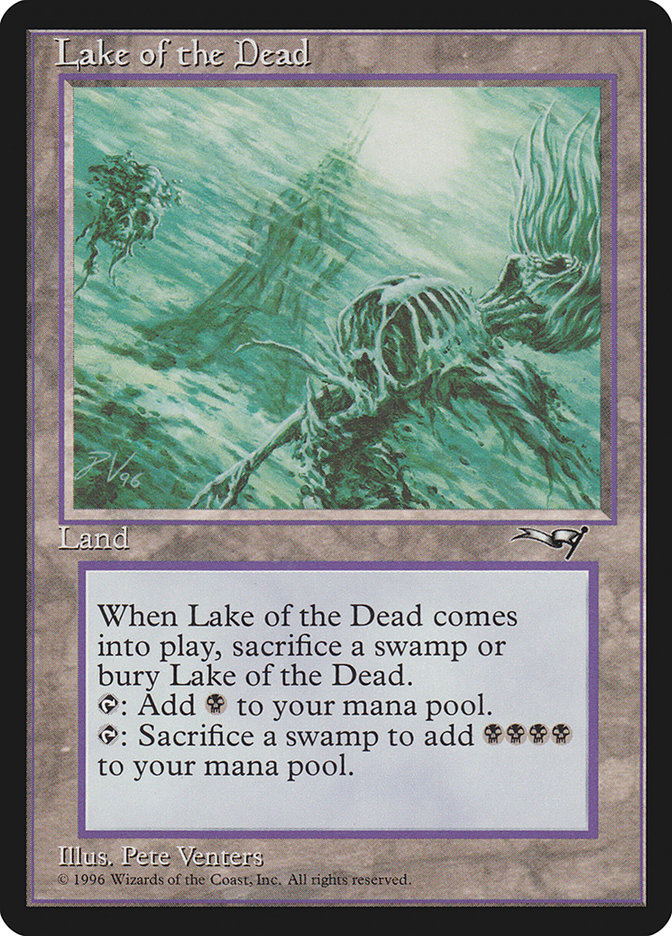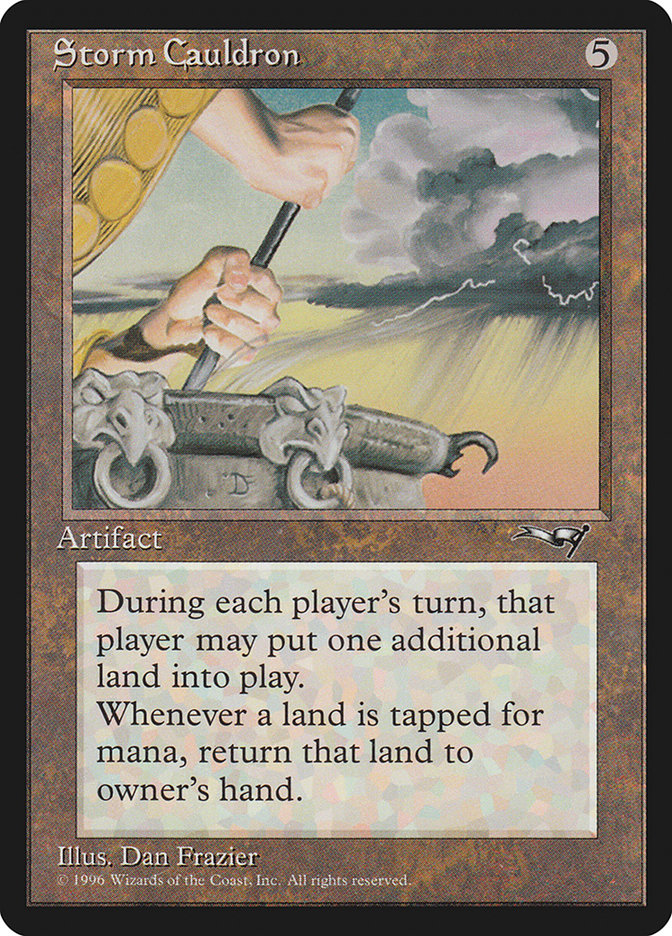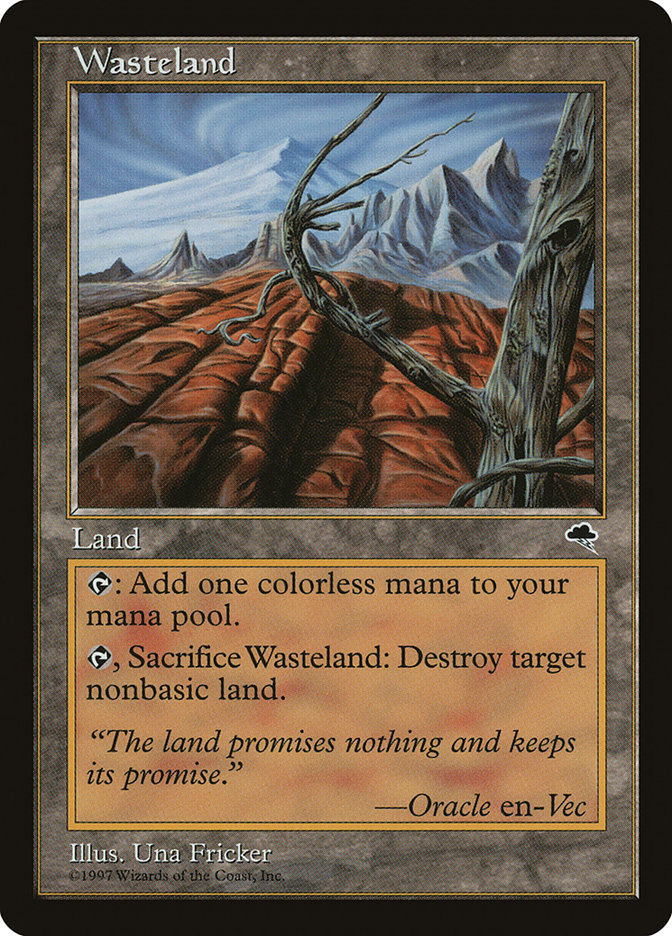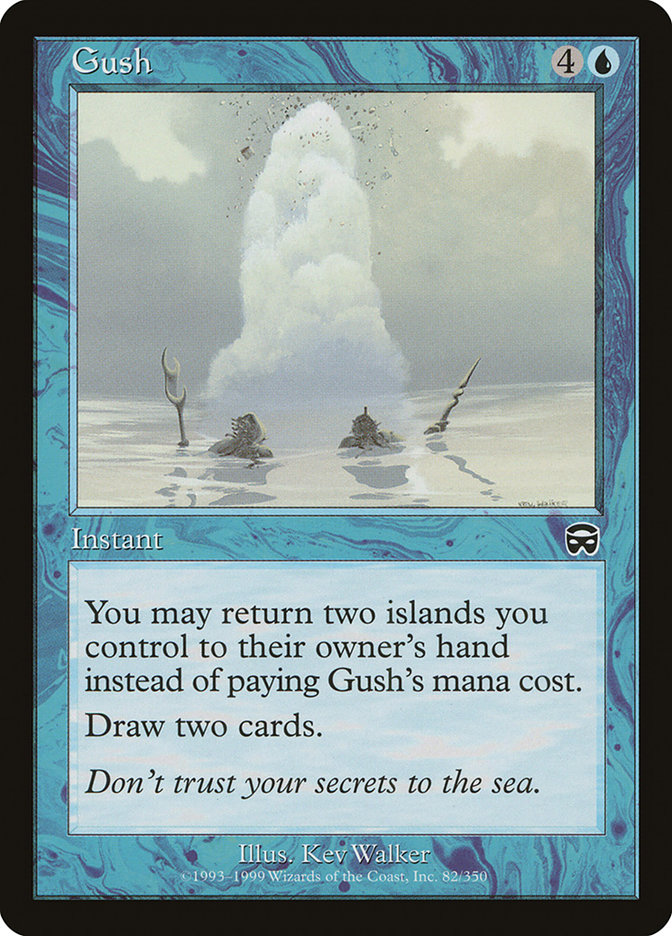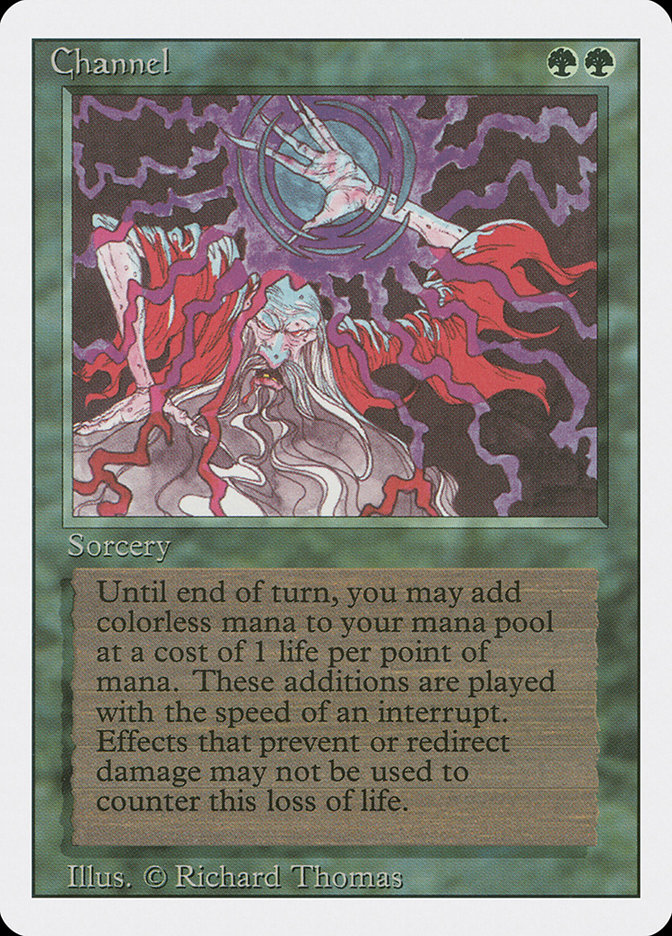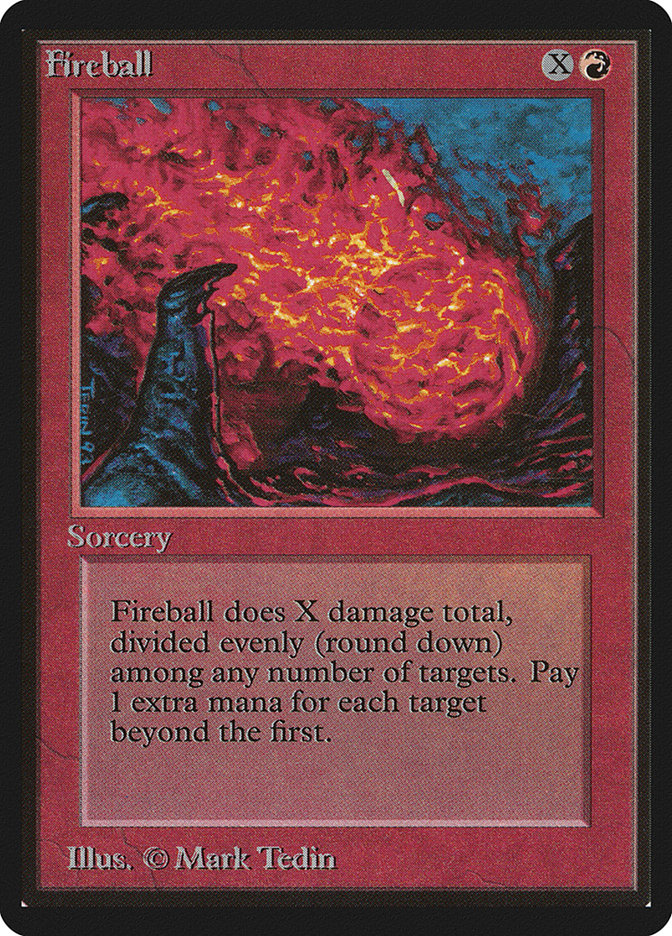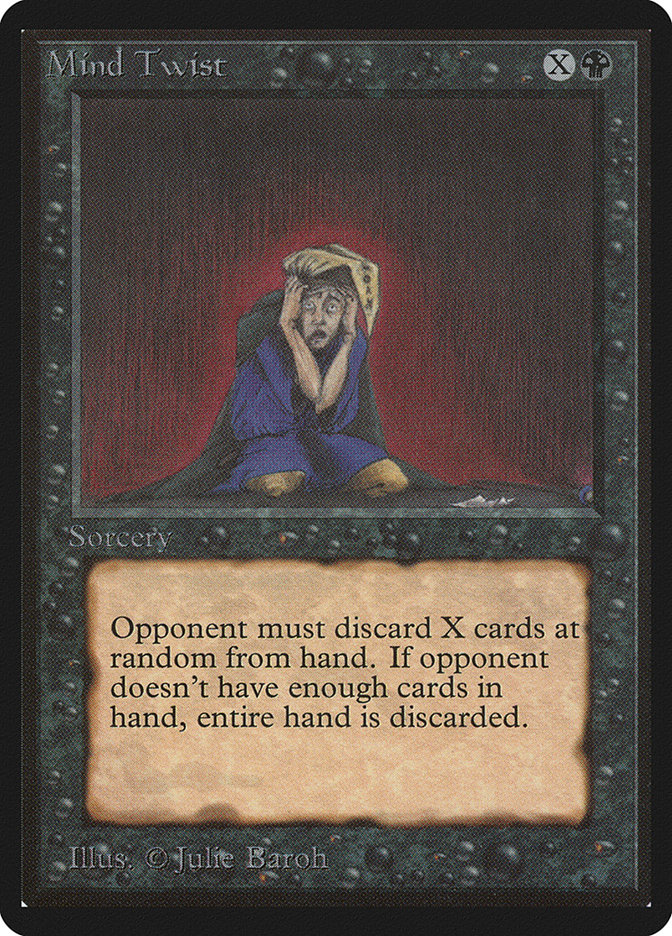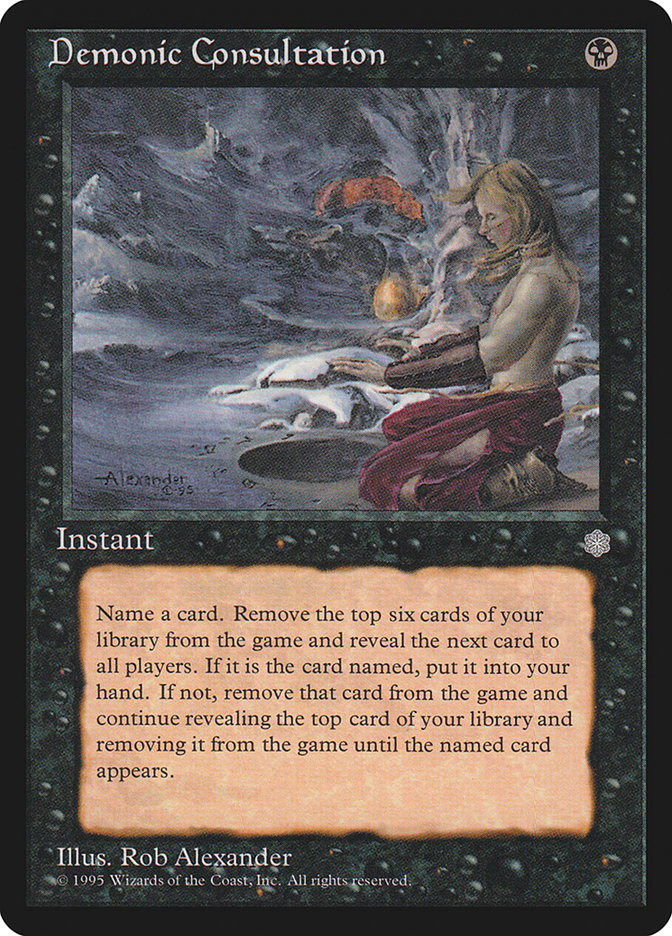All week, we’ve been reaching higher and higher, revisiting the absolute
strongest green cards in the food chain…
Today, we reach the top.
While Food Chain doesn’t crack our top 25 list, it deserves an honorable
mention, at the very least, finishing 26th. There’s a reasonable case for
it being higher, however, particularly given the growing number of
potential combos with it that don’t just rely on other broken cards to
work.
Food Chain does fit the “style” of cards atop the green all-time list,
however. While there is the occasional Tarmogoyf or Eternal Witness, almost
every single card in green’s top 25 generates a mana advantage or searches
up the creatures or lands you want. While many of the color’s greatest hits
are in the +1 space, like Llanowar Elves, Birds of Paradise, and Noble
Hierarch, the accelerators in our top five list go way, way beyond
anything remotely reasonable.
#5: Hypergenesis
While Hypergenesis has been banned in Modern in every single event, with
the lone exception of the Magic Online Streamers Showdown event that
debuted the format and the SCG CON flavor of self-evident No Banned List
fun, there was a time the card was legal in Modern’s precursor, Extended.
The card was immediately identified as a potentially problematic combo
engine, thanks to the interaction with the cascade mechanic.
If you played without any ones or twos, you could guarantee your cascades
always hit a Hypergenesis, which, despite having no cost, counts as zero
cost for cascade. Once the spell resolves, you can put your hand onto the
battlefield for free, and with powerful enough of fatties, that should
hopefully be enough to decide the game.
Creatures (21)
- 1 Sakashima the Impostor
- 4 Angel of Despair
- 4 Bogardan Hellkite
- 4 Simian Spirit Guide
- 4 Progenitus
- 4 Terastodon
Lands (21)
Spells (18)

The Hypergenesis list Kuroda took to a Grand Prix finals didn’t have access
to the unreal fatties of today, such as Emrakul, the Aeons Torn or
Griselbrand.
Instead, he had to make due with a slightly less extreme set of threats,
most of which were designed to be especially good at beating whatever the
opponent’s best threat was (given the nature of Hypergenesis letting them
play their best threat for free).
These are some pretty intense 187s and were usually able to get the best of
things, particularly when they just needed to buy some time and keep
opponents busy long enough for Progenitus to take ’em out.
Simian Spirit Guide was particularly dangerous in Hypergenesis, as it was
effectively a zero-cost “ritual,” despite having a printed casting cost of
three, meaning it wouldn’t get in the way of the Cascade combo the way
other rituals would.
#4: Survival of the Fittest
Survival of the Fittest is a card near and dear to my heart. Back when
creatures used to suck, Survival let you play a very interesting and
diverse mix of sucky creatures, which could be awesome when played at the
perfect moment.
Unfortunately (for Survival), creatures got better and eventually Caleb
Durward helped lead a Legacy revolution that finally got the card banned
there to go along with its previous Extended ban. While it never actually
got banned in Block or Standard, it easily could have (and possibly should
have).
While there were several competing styles of Survival decks around the time
of its banning, the one that really ignited the controversy was Caleb’s
Vengevine/Survival deck that would quickly put all its Vengevines into the
graveyard, then play a couple of Basking Rootwallas for free, leading to
extremely backbreaking assaults (frequently in the air, thanks to Wonder)
that were immune to most forms of interaction.
While Survival was always an extremely over the top way to search for
creatures, the interaction with Vengevine actually turned it into an
incredible mana engine to boot (letting you play as many Vengevines as you
want for just one mana each).
Creatures (24)
Lands (21)
Spells (15)
Sideboard

Within a couple months, the format had devolved into a paper/rock/scissors
battle between Survival Aggro, Survival Control, and Survival Combo. The
format was wide open, and you could play whatever Survival deck you wanted.
#3: Oath of Druids
While Survival of the Fittest was really broken down when it was a way to
cheat mana, in addition to being a “tutor,” Oath of Druids never even
bothered to pretend to play fair. About the closest thing to a fair Oath of
Druids deck as you can find is the G/W Archangel battlefield control deck
that Randy Buehler and Team CMU took to US Nationals 1998.
Spells (32)

By playing just two Archangels as its only threats, Randy knew that
untapping with Oath of Druids on the table would give him a free threat
that was surely going to outclass whatever Jackal Pups his opponent had
committed to the table.
The catch?
Oath of Druids puts the rest of the cards revealed into your graveyard. If
you’re not careful, you’ll quickly run out of cards.
Team CMU solved this by adding Gaea’s Blessing, which would reshuffle
(Emrakul style) whenever flipped by Oath of Druids. This interaction would
be put to good use by The Great One, Hall of Famer Bob Maher Jr.
Creatures (3)
Lands (23)
Spells (34)

If you’re interested in watching one of the greatest performances in Magic
history, I’d encourage you to check out the finals of his Pro Tour Chicago
victory here.
Here, Archangel has been upgraded to Morphling, and he needs just a single
copy since it can protect itself so much better. Instead of a second copy,
we see both a Shard Phoenix and a Spike Feeder. Shard Phoenix could handle
most “go-wide” strategies (with Morphling able to outclass a single big
threat), and Spike Feeder was invaluable for combating direct damage.
Both Shard Phoenix and Spike Feeder can be sacrificed for zero mana,
meaning Bob could actually keep Oathing turn after turn, thanks to the
aforementioned Gaea’s Blessing recursion keeping things going.
Nowadays, Oath of Druids lives on in Vintage, where it can be combined with
Forbidden Orchard to remove the option for the opponent to not walk into a
turn two Blightsteel Colossus, Griselbrand, or Inferno Titan.
#2: Fastbond
Number two on our list is the epitome of “breaking the one land per turn
limit”. Fastbond was extremely abusive long before most of the world caught
on but was only legal in Vintage and Legacy (where it was eventually
restricted and banned, respectively).
The greatest of the Legacy Fastbond decks?
My vote goes to Eric D. Taylor, one of the four founding fathers of Magic
strategy writing, and the Storm Drain deck he designed and piloted to a
North American Legacy championship title.
Lands (29)
Spells (31)

While the deck would start out looking like a Standard Necro Deck, Fastbond
would allow you to play all your land immediately, which is a pretty
substantial advantage when you can already draw as many cards as you want.
And that’s to say nothing of the Strip Mines and Lakes of the Dead!
As if that wasn’t enough, Fastbond could be combined with Storm Cauldron to
create a totally busted mana engine. Storm Cauldron returns lands to your
hand when you tap them, so you can actually make as much mana as you are
willing to pay life.
Assuming you’ve already paid some life to Fastbond and Necropotence, you
might not have enough life to kill your opponent outright with a Drain Life
or Soul Burn; however, decimating their position with Hymns and Strip
Mines, followed by a Drain for twelve or more, would generally leave them
powerless. The twelve life gained by the Drain could then be converted into
more cards, or you could just wait until the following turn to finish them
off with another twelve point drain or whatever.
Olle Rade and I used to play so much Vintage with each other at Pro Tours,
and both of us were fond of Fastbond, particularly when the printing of
Wasteland made the format into a giant joke.
Four Strip Mines and four Wastelands?
We used to just spend turn after turn Strip Mining and Wastelanding each
other, really feeling alive. However, it didn’t take much of this for
Fastbond to finally get restricted (with Strip Mine following the year
after).
Even with only a single Fastbond and a single Strip Mine legal, the card
has enjoyed plenty of continued success in the game’s most busted format,
thanks to its absurd synergy with Gush.
Creatures (5)
Lands (14)
Spells (41)
- 4 Brainstorm
- 1 Fastbond
- 2 Mana Drain
- 1 Vampiric Tutor
- 1 Mystical Tutor
- 1 Yawgmoth's Will
- 4 Duress
- 4 Force of Will
- 1 Demonic Tutor
- 1 Time Walk
- 1 Ancestral Recall
- 1 Red Elemental Blast
- 4 Gush
- 1 Cunning Wish
- 4 Merchant Scroll
- 2 Misdirection
- 1 Black Lotus
- 3 Opt
- 1 Mox Emerald
- 1 Mox Jet
- 1 Mox Ruby
- 1 Mox Sapphire
Sideboard

Gush has been restricted and unrestricted more times than most, and when it
has been legal, it has been extremely busted with Fastbond. Like the Storm
Cauldron strategy above, bouncing lands changing from a cost to an extreme
advantage is pretty good.
With Fastbond, Gush is like an Ancestral Recall that sort of always draws
Black Lotus instead of its third card. The cost? A few life…
…and who wouldn’t want to trade life points for mana?
#1: Channel
Channel is the original one-turn kill combo card, and the Channel +
Fireball thing really was the defining two-card combo of Beta,
basically from the start.
What’s truly remarkable is Channel getting reprinted multiple times and
just how long people were willing to put up with it.
The first deck I ever took to the ante games kids were playing in the early
90s is discussed at length
here
. The short version is that kids in my town wanted to play 40-card decks,
rather than 60, and didn’t respect the four-of limit.
”
The rule book says 40. If we’re not playing in a tournament, we don’t
need to be tournament legal.”
They also insisted on playing for ante, so I did the only logical thing I
could do…
I played with seven or eight Channels in my 40-card deck and just kept
taking their cards until they eventually agreed to play by tournament
rules.
At a slightly higher level of competition, Mark Justice and Henry Stern
really pushed the absurdity of Channel + Fireball to new heights at US
Nationals 1995. Ice Age was the newest set, and word spread that
they splashed black in their R/G Orcish Lumberjack decks…
For what, you might ask?
Despite being legal as a one-of, they actually did not play Mind
Twist, preferring instead to Black Vise people to death.
No, instead, they played Demonic Consultation, with the primary target
being the single copy of Channel. Sure, Consulting for Channel would cause
them to lose on the spot around 12% of the time (i.e, whenever Channel was
one of the top six cards); however, 88% of the time they’d find the Channel
and then end the game on the spot.
Creatures (15)
Lands (21)
Spells (25)

Channel is so busted, it was actually banned in Vintage
for a while (rather than just restricted like other broken cards). The
purists ended up winning out, thanks to the printing of cards like Force of
Will, allowing Channel to be unbanned and merely restricted, but its legacy
of being the most broken green card of all-time lives on to this day.
I’d like to call out a few honorable mentions that we didn’t discuss this
week but that deserve recognition, nonetheless.
- Chord of Calling
- Sylvan Library
- Scavenging Ooze
- Aluren
- Rancor
- Plow Under
- Traverse the Ulvenwald
- Attune with Aether
- Argothian Enchantress
- Garruk Wildspeaker
- Rofellos, Llanowar Emissary
How did I do?
Is there anything egregious missing from this top 25 green cards of
all-time?
See you Monday, as our journey continues…


